While working my way to the release of the Proto Pedal, I'd been breadboarding lots of circuits. I thought I'd share some of the techniques I've been using to build and troubleshoot breadboards on my workbench.
Work in progress
Work From a Hard-Copy Schematic
In the world of computers and online documentation, it can be tempting to try to work strictly from onscreen documentation, but sometimes there's an advantage to having a paper copy. Here's one example, pulled right out of my notebook:
Iterating on paper
Having the schematic on paper is more convenient to use on my workbench while I'm building. You'll notice that the op-amp terminals are numbered with the package pins, and some of the wires have been marked with colors to make them easier to find. You'll also notice the red ink where some part values and connections were revised as it was being tested.
You'll also notice that the schematic was hand drawn, not just printed from a digital copy. This gave me one more chance to internalize the circuit and consider how it was going to be assembled.
Work From A Soft-Copy Schematic
In direct contradiction to the previous advice, there are also advantages to using schematic-drawing software.
The hand-drawn circuit above was actually transcribed from one drawn in LT-Spice, which I used to verify that it was functional and select the gyrator capacitor values. In particular, it allowed me to experiment with a couple different versions of the AC-coupling circuits.
Iterating off paper
Assembly Diagram.
Moving from the schematic to breadboard means actually building the circuit from real, physical components, proving that theory and practice correspond. It's an exciting milestone in the development of a circuit. As such, it can be tempting to plunge in and throw components on the breadboard wherever they fit.
It can also be a recipe for headaches as the circuit grows unpredictably, and you may find that you've painted yourself into a corner.
To help circumvent the headache, I'll draw an assembly diagram.
It's just like playing Battleship.
This diagram is drawn on graph paper. The rows, columns and power buses of the breadboard have been outlined in ink, and components sketched in pencil, transcribed from the schematic. As things took shape, some details got rearranged, and components were erased and redrawn.
Node Analysis
We often think about the components, but sometimes we need to more carefully consider how they're connected. For example, consider the following schematic snippet:
At first glance, we see that there's an op-amp, a couple resistors and a cap -- this is useful information because it informs the components we'll need before we can build it. But if we look at how they're connected, we notice that there's a point where C5 meets both R7 and R8. Somewhere in the circuit, we need to be sure those three parts are joined.
When you're troubleshooting a circuit, this can be a useful way to look at things – counting and making sure that each node is joining the correct number of components.
Assembly Instructions
After drawing the assembly diagram, I slowly worked through it, looking at each of the penciled symbols. For each mark, I classified it (jumper wire, resistor, capacitor, semiconductor, etc.), took note of its value and location and logged it in a list. The lists were double- and triple-checked for completeness before moving on (that's where the tally marks in the corner of the assembly diagram came from).
Build instructions
With these lists, assembling the board became a matter of following each list and installing the corresponding item at the listed coordinates. As each one gets installed, it gets checked off of both the list and the diagram.
First Powerup
Powering up a brand new breadboard the first time can be a bit nerve-wracking. Will it work? Will it explode?
You can begin to address the "will it explode" question before first applying power. Check that the power polarity is correct, and that the chips and electrolytic capacitors are the right way 'round. You can also use a continuity checker to verify that the power and ground rails aren't shorted together.
When I'm finally confident enough with my construction, I power it up. For the first power up, I turn the current limit on my power supply down, and watch the readout on the power supply. Most circuits will draw a bunch of current as they power up, then settle to something much lower.
If the circuit is drawing a bunch of current continuously, the supply should indicate that the current limit has been reached, and the voltage output will be less than the setting. If that's the case, power down quickly and look for shorts!
Neatness Counts
As I start breadboarding circuits, I usually leave the component leads long in case something is wrong and I need some flexibility to work around it.
A young breadboard
Eventually, flexibility becomes a liability. The components with long leads can bend, creating unanticipated short circuits. To prevent that, once a portion of a circuit is working, I'll snip the leads and cinch the component up against the breadboard.
A more mature specimen
So How Does It Work?
I'm extremely happy to report that the circuit shown in these examples worked on the first try.
As they say: Proper Planning Prevents Poor Performance.
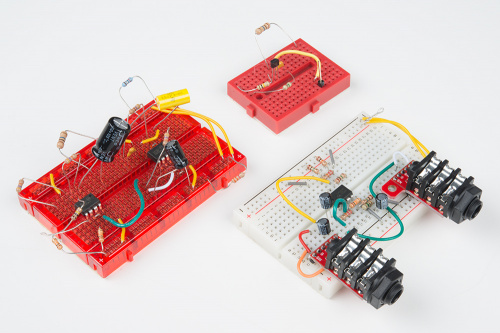

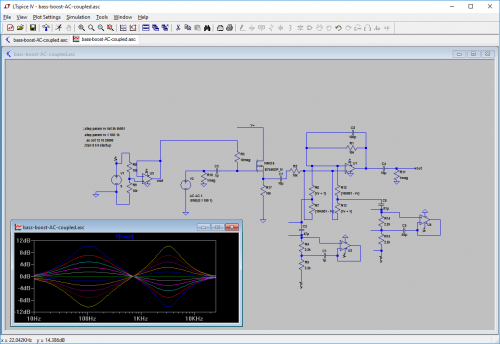

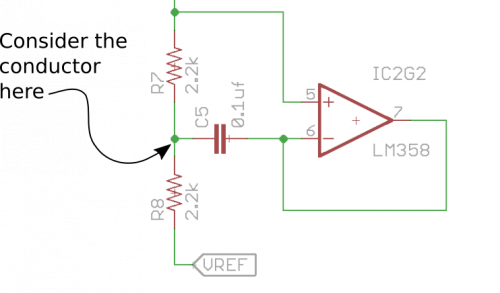
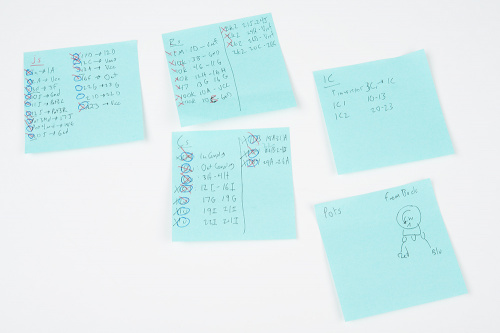
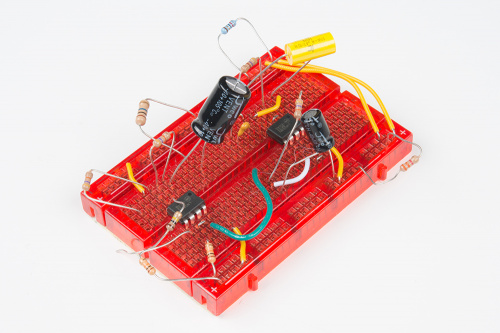
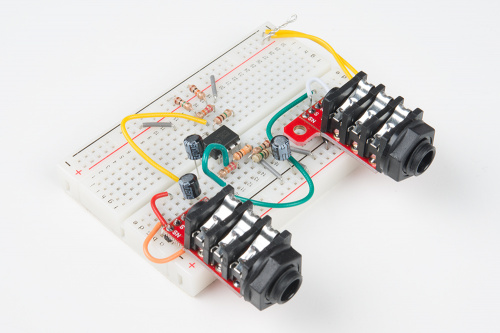






A very newbie question - is there a good self-taught book/books/online course that will teach me how to understand circuit design, especially with components? I really want to do this stuff, and I've got basic electronics skills, but the leap from a simple Arduino hack to something useful and reasonably complex is eluding me. This kind of thing helps, but I'm foundering around the scale-up issue - even breaking the circuit down into smaller sub circuits doesn't always help.
I've got some recommendations.
At the entry level, Forrest Mims' books are one of the places I got my start. Many are smallish circuits that use only a handful of components. From the perspective of this blog post, the Op-Amp book is probably the most relevant.
A step above that, the Art Of Electronics Student Manual is a pretty good guided tour through circuit design. This isn't the 1000 page tome, but the companion volume, printed as a comb-bound lab manual. Each chapter breaks down an area of circuit design, and guides you through the solutions.
I'm also a big fan of old National Semiconductor (now owned by TI) app notes. Lots of useful stuff in there. AN31 covers op amp circuits, and AN-32 covers discrete FETs.
Eventually, you build up a mental catalog of circuits that you're familiar with, and can combine into more sophisticated systems.
Depending on your interests, you might be able to find literature that addresses it specifically. If you're into guitar pedals, GeoFex and AMZ have some great analyses of FX circuits. If you're into synthesizers, I'd recommend Electronotes.
If you live near a university or community college, you might see if you can get into a class on introductory circuits.
In tandem with any of these ideas, Bob Pease's Troubleshooting Analog Circuits contains wisdom about how to approach things when the circuit on your bench isn't working as intnded. Bob is a very engaging author -- this one is a lot more engaging and relatable than the title makes it sound.
I read this like a thriller and somehow missed a lot of the smoke, or stuff getting too hot. Please tell me as you get better at this you have less fun?!?
I've been at this for a very long time, and it's still fun for me. I still burn components from time to time, and I'm still surprised on a regular basis. I enjoy all of it, and try to learn from each mistake and surprise.